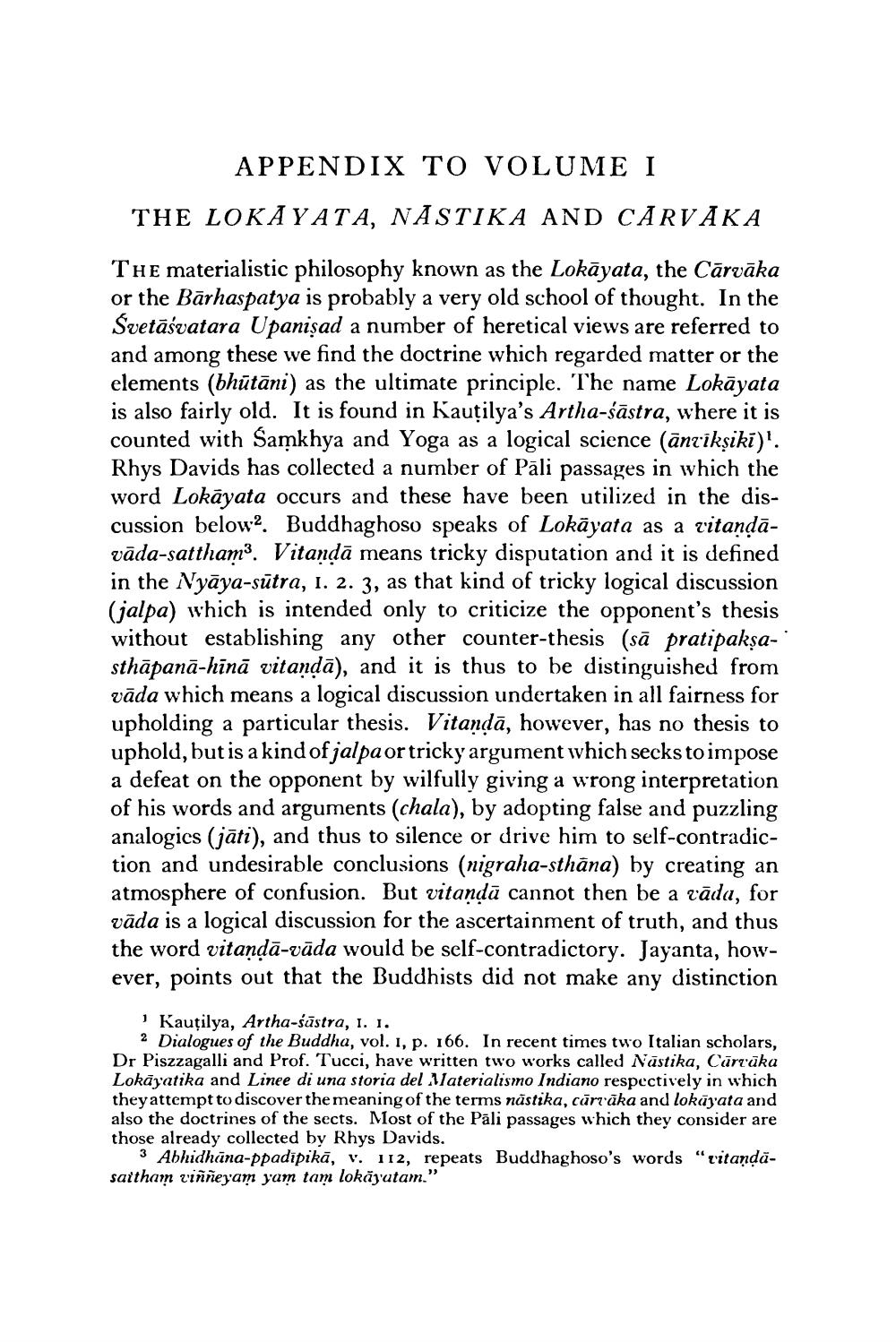________________
APPENDIX TO VOLUME I
THE LOKA YATA, NĀSTIKA AND CARVAKA
The materialistic philosophy known as the Lokāyata, the Cārvāka or the Bārhaspatya is probably a very old school of thought. In the Svetāśvatara Upanisad a number of heretical views are referred to and among these we find the doctrine which regarded matter or the elements (bhūtāni) as the ultimate principle. The name Lokāyata is also fairly old. It is found in Kautilya's Artha-śāstra, where it is counted with Samkhya and Yoga as a logical science (āntikșiki)". Rhys Davids has collected a number of Pāli passages in which the word Lokāyata occurs and these have been utilized in the discussion below. Buddhaghoso speaks of Lokāyata as a vitandavāda-sattham. Vitandā means tricky disputation and it is defined in the Nyāya-sūtra, I. 2. 3, as that kind of tricky logical discussion (jalpa) which is intended only to criticize the opponent's thesis without establishing any other counter-thesis (sā prati pakşasthāpanā-hīnā vitandā), and it is thus to be distinguished from vāda which means a logical discussion undertaken in all fairness for upholding a particular thesis. Vitandā, however, has no thesis to uphold, but is a kind of jalpaor tricky argument which seeks to impose a defeat on the opponent by wilfully giving a wrong interpretation of his words and arguments (chala), by adopting false and puzz analogics (jāti), and thus to silence or drive him to self-contradiction and undesirable conclusions (nigraha-sthāna) by creating an atmosphere of confusion. But vitandā cannot then be a rāda, for vāda is a logical discussion for the ascertainment of truth, and thus the word vitandā-vāda would be self-contradictory. Jayanta, however, points out that the Buddhists did not make any distinction
Kautilya, Artha-śāstra, 1. 1. 2 Dialogues of the Buddha, vol. 1, p. 166. In recent times two Italian scholars, Dr Piszzagalli and Prof. Tucci, have written two works called Nāstika, Cārtāka Lokāy'atika and Linee di una storia del Materialismo Indiano respectively in which they attempt to discover the meaning of the terms nästika, cārtāka and lokāyata and also the doctrines of the sects. Most of the Pāli passages which they consider are those already collected by Rhys Davids.
3 Abhidhāna-ppadīpikā, v. 112, repeats Buddhaghoso's words "vitandāsaitham viññejam yam tam lokäyutam."




